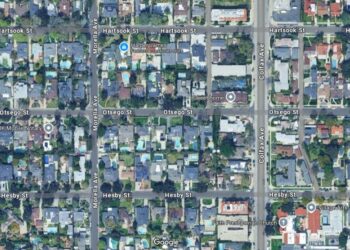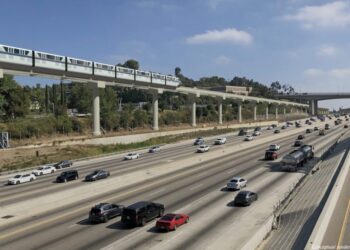Ridership on LA Metro buses and trains rose above 1 million in October for the second month in a row, spurred in part by weekend leisure riders and stepped up patrols and other amplified security measures, the transit agency reported on Thursday, Nov. 21.
The average weekday ridership reached 1,025,262, the highest level since the Covid-19 pandemic. This also marks the second month in a row when the agency surpassed the one million rider mark.
The ridership in October increased for the 23rd consecutive month of year-over-year ridership, the agency reported.
Overall weekday ridership is at 86% of pre-Covid pandemic levels from October 2019. Ridership on Saturdays and Sundays continued very high, at 98% of pre-pandemic boardings. Sunday ridership surpassed the October 2019 levels.
Rail ridership jumped 8.6% over the previous October, while bus ridership rose 7.5% over October 2023, the agency reported. The agency noted in a statement that rail ridership has been affected the most by people working from home or on hybrid shifts, in which they only leave their home office to go to a workplace on certain weekdays.
Also, rail on-time performance was at 99.45% from July through September 2024, according to a Metro report.
“It is encouraging ridership is coming back. We know absolutely a lot of people depend on Metro. And we have to make sure ridership is safe,” said John Fasana, a former LA Metro board member from Duarte.
Metro runs six rail lines and 119 bus lines. Of the buses, 54 run on weekdays, 39 on Saturdays and 35 on Sundays. Changes are coming to bus lines starting Dec. 15. Extra trips will be added to 10 bus lines during the weekdays (Lines 14/37, 33, 55, 105, 108, 150, 164, 165, 244 and 601), three lines on Saturdays (Lines 62, 601, 910) and two on Sundays (Lines 601 and 910). These changes are being made to reduce crowding on buses and also to help with late-night connections, according to Metro report released on Nov. 21.
Metro reported that the…
Read the full article here







